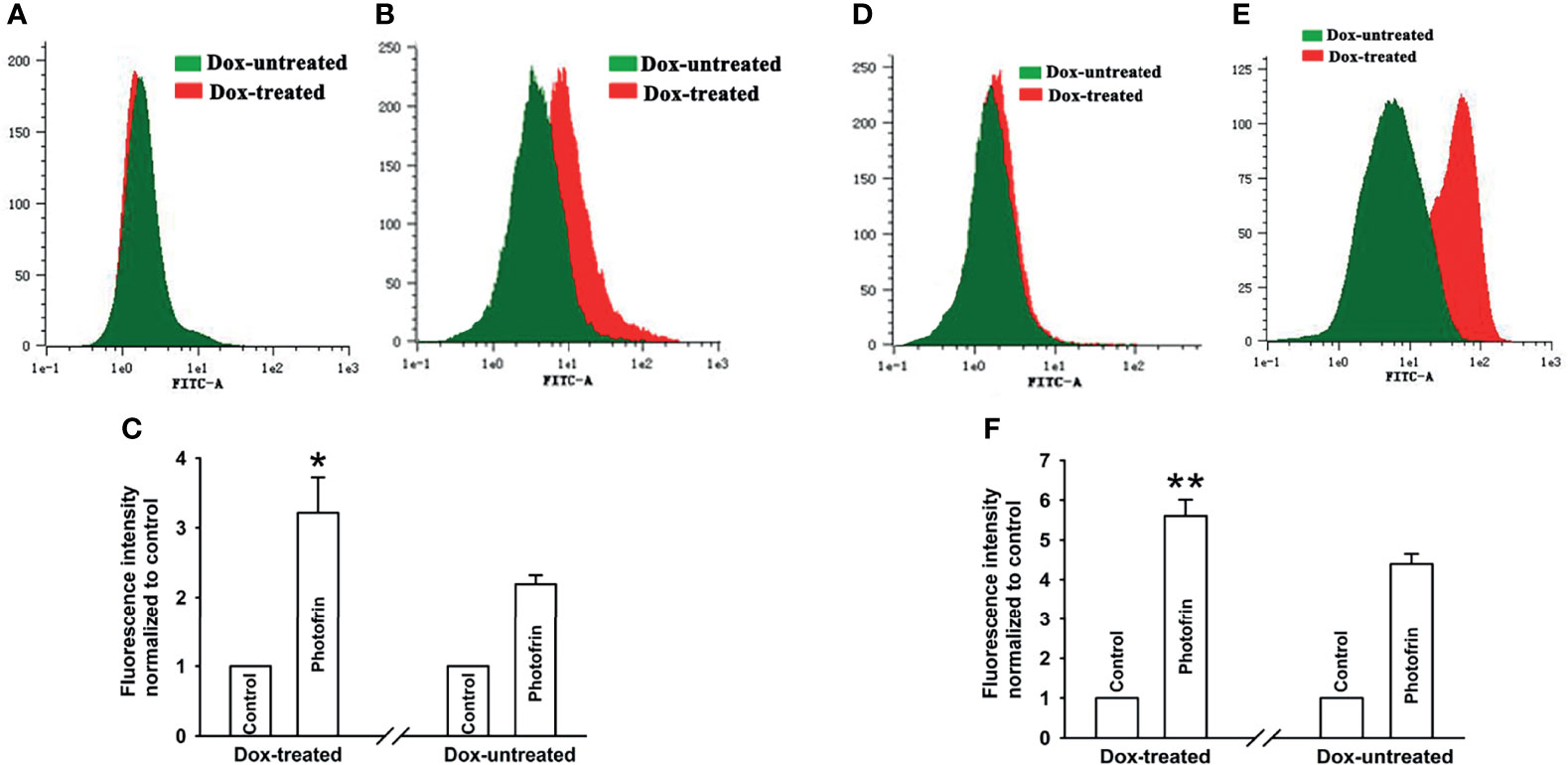
94% of researchers rate our articles as excellent or good
Learn more about the work of our research integrity team to safeguard the quality of each article we publish.
Find out more
CORRECTION article
Front. Oncol., 23 February 2022
Sec. Radiation Oncology
Volume 12 - 2022 | https://doi.org/10.3389/fonc.2022.853278
This article is a correction to:
A Novel Role of Connexin 40-Formed Channels in the Enhanced Efficacy of Photodynamic Therapy
 Deng-Pan Wu1,2†
Deng-Pan Wu1,2† Li-Ru Bai3†
Li-Ru Bai3† Yan-Fang Lv1†
Yan-Fang Lv1† Yan Zhou1
Yan Zhou1 Chun-Hui Ding1
Chun-Hui Ding1 Si-Man Yang4
Si-Man Yang4 Fan Zhang4
Fan Zhang4 Yuan-Yuan Wang1
Yuan-Yuan Wang1 Jin-Lan Huang1,2
Jin-Lan Huang1,2 Xiao-Xing Yin1*
Xiao-Xing Yin1*A corrigendum on
A Novel Role of Connexin 40-Formed Channels in the Enhanced Efficacy of Photodynamic Therapy
By Deng-Pan Wu, Li-Ru Bai, Yan-Fang Lv, Yan Zhou, Chun-Hui Ding, Si-Man Yang, Fan Zhang, Yuan-Yuan Wang, Jin-Lan Huang, Xiao-Xing Yin (2019). Front. Oncol. 9:595. doi: 10.3389/fonc.2019.00595
In the original article, there was a mistake in Figure 5 as published. After confirmation, we found that the representative images of the flow cytometer of Dox-untreated and Dox-treated control group (panel A) and Photofrin group (panel E) in Figure 5 were misused due to our carelessness in the selection of representative images for image combination using software of flow cytometer. The corrected Figure 5 appears below.

Figure 5 Ca2+ release and influx were increased by Cx40-formed channels. After incubation with Fluo-3-Am, Dox-treated and Dox-untreated cells were irradiated with or without Photofrin. Flow cytometry was performed to measure the fluorescence intensity of Ca2+ after PDT. (A) control; (B) 2.5mg/mL Photofrin; (C) The fluorescence intensity of Ca2+. For (A–C), the cells were incubated in fresh BBS in the absence of Ca2+ during irradiation. (D) control; (E) 2.5mg/mL Photofrin; (F) The fluorescence intensity of Ca2+. For (D–F), the cells were incubated in fresh BBS in the presence of Ca2+ during irradiation. Data points are mean ± SD from 3 experiments. t test was used to assess statistically significant differences between groups. *P < 0.05, **P < 0.01, significantly different from Dox-untreated group.
The authors apologize for this error and state that this does not change the scientific conclusions of the article in any way. The original article has been updated.
All claims expressed in this article are solely those of the authors and do not necessarily represent those of their affiliated organizations, or those of the publisher, the editors and the reviewers. Any product that may be evaluated in this article, or claim that may be made by its manufacturer, is not guaranteed or endorsed by the publisher.
Keywords: Connexin 40, channel, photodynamic therapy, reactive oxygen species, calcium
Citation: Wu D-P, Bai L-R, Lv Y-F, Zhou Y, Ding C-H, Yang S-M, Zhang F, Wang Y-Y, Huang J-L and Yin X-X (2022) Corrigendum: A Novel Role of Connexin 40-Formed Channels in the Enhanced Efficacy of Photodynamic Therapy. Front. Oncol. 12:853278. doi: 10.3389/fonc.2022.853278
Received: 12 January 2022; Accepted: 19 January 2022;
Published: 23 February 2022.
Edited and Reviewed by:
Valdir Carlos Colussi, University Hospitals Cleveland Medical Center, United StatesCopyright © 2022 Wu, Bai, Lv, Zhou, Ding, Yang, Zhang, Wang, Huang and Yin. This is an open-access article distributed under the terms of the Creative Commons Attribution License (CC BY). The use, distribution or reproduction in other forums is permitted, provided the original author(s) and the copyright owner(s) are credited and that the original publication in this journal is cited, in accordance with accepted academic practice. No use, distribution or reproduction is permitted which does not comply with these terms.
*Correspondence: Xiao-Xing Yin, eWlueHhAeHpobXUuZWR1LmNu
†These authors have contributed equally to this work
Disclaimer: All claims expressed in this article are solely those of the authors and do not necessarily represent those of their affiliated organizations, or those of the publisher, the editors and the reviewers. Any product that may be evaluated in this article or claim that may be made by its manufacturer is not guaranteed or endorsed by the publisher.
Research integrity at Frontiers

Learn more about the work of our research integrity team to safeguard the quality of each article we publish.